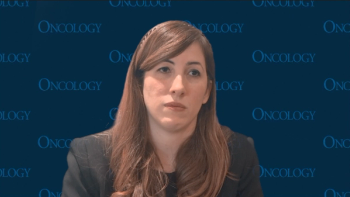
Enhanced Representation Is Key in New Peritoneal Surface Malignancy Guidelines
The new peritoneal surface malignancy care guidelines had clinicians gather from every disease state to show increased representation.
The peritoneal surface malignancy guidelines that were created by a team of Yale researchers are the first since the 2018 Chicago Consensus. While the old guidelines aimed to bring clinicians together and be more patient centric, they were not widely adopted.
According to Kiran Turaga, MD, MPH, a professor of surgical oncology, assistant medical director of the Clinical Trials Office, and division chief of surgical oncology and surgery at Yale Cancer Center, and the research lead of the team that put together these guidelines, these new guidelines are much larger, had patient representatives, and received endorsements from the Society of Surgical Oncology. They were also adopted into the National Comprehensive Cancer Network.
One of the main points of emphasis of these guidelines was improving the current landscape of the training of oncologists for this disease. One of the simplest ways this is done is by using common terminology so trainees can better understand and communicate various topics.
Transcript:
The 2018 Chicago Consensus was our first effort at trying to bring people together to reduce the nihilism, the variation in care, and to try to be more patient centric in the way we think about it. We were fortunate that it gained some traction. It helped with training, but it didn’t change a lot of the other national guidelines, such as the NCCN [National Comprehensive Cancer Network] guidelines. Several guidelines did not change, therefore reducing their impact and reducing their adoptability. This time around, the guidelines included a larger group of researchers, including everyone who’s interested in peritoneal surface disease. [We] invited clinicians who are experts in these areas through NCCN panels, people who [help create] national guidelines, pathologists, surgical oncologists, and medical oncologists, but the key difference was that we also had patient representatives. Every disease site had a patient group that represented their perspective and stakeholders. We had international stakeholders, people from different parts of the world.
We also had endorsement from the Society of Surgical Oncology, which is the premier surgical oncology association. The methodological rigor, this time, was very different. Last time, it was like getting together and coming up with these guidelines. This time, it was a very rigorous, Delphian process. We did rapid reviews, almost like systematic reviews, for each of the diseases. There are a lot of updates on the data that were done for all of this. We created a course based on all the stuff that was studied. It was methodologically rigorous, it included patients, and it has alignment with major national organizations, and that’s how these [guidelines] are different than last time.
Reference
Butensky SD, Bansal VV, Su DG, et al. Consensus guideline for the management of gastric cancer with synchronous peritoneal metastases. Ann Surg Oncol. Published online June 25, 2025. doi:10.1245/s10434-025-17361-2
Newsletter
Stay up to date on recent advances in the multidisciplinary approach to cancer.














































































